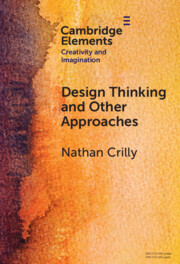Element contents
Design Thinking and Other Approaches
Published online by Cambridge University Press: 10 June 2024
Summary
Keywords
- Type
- Element
- Information
- Online ISBN: 9781009498685Publisher: Cambridge University PressPrint publication: 03 October 2024

